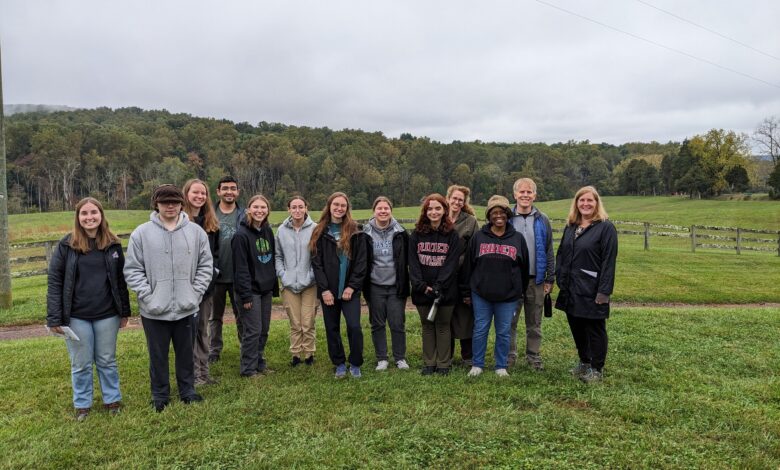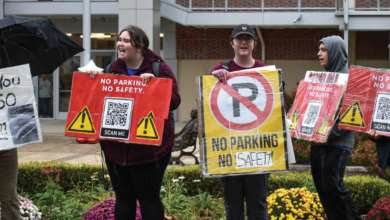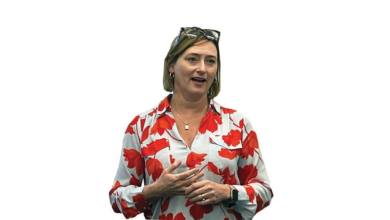
Students take trip to James Madison’s Montpelier
By Jay Roberson
Students taking Environmental Field Methods and Data Analysis in the fall semester had the opportunity to apply their researching skills on a trip to James Madison’s Montpelier plantation, where they dated a recently discovered burial ground of those who were enslaved.
Data collection from the field
Daniel Druckenbrod, professor of earth and chemical sciences, taught the class and was able to arrange a class trip to Montpelier through his connections from past research.
“The Montpelier foundation has known for some time that there are burial sites of formerly enslaved people at this portion of the plantation. They now think that instead of maybe 40 burial sites there may be closer to 300,” said Druckenbrod.
In order to reveal the age of the burial site, the students cored trees and recorded the ring width.
One of the students on the trip, sophomore environmental science major Alexis Burns said, “The people who knew how to use GIS [graphic information system] would put where the locations are, the trees are and what the ring diameters were. Then we would have some people take the ring width into Excel then see how big they are for the purpose of seeing what climate events they went through, to show them that all the tree ring widths line up.”
The history behind Montpelier
Though the students were on the trip for research, they were required to learn about the history of the plantation from Evelyn McDowell, the chair of the department of accounting, and Brooke Hunter, associate dean of the College of Arts and Sciences.
Hunter said, “The main point that Dr. McDowell and I wanted to express to the students in that class visit, and then again on the trip, is how amazing it is that they’re getting this experience to contribute to the interpretation of history at such an important site.”
Students were also taken on a tour through the plantation to learn more about the history behind it.
“The first day, we were mostly outside, doing the tree coring and recording data and actually seeing the depressions in the dirt,” Burns said. “The second day we spent the whole time going through the property. They took us on a tour through the Madison’s house and they showed us each room.”
Burns also noted that there was not much done in memory of those who were enslaved on Montpelier at this moment, besides “a couple little houses outside that were dedicated in memory of the slaves and the stories that they can’t tell.”
Using science for good
Through doing research and reporting their findings to the Montpelier Descendants Committee, which represents the descendants of enslaved people, Druckenbrod wanted to show students that their research can be beneficial for society.
“It’s a course that has engaged learning points and civic community engagement, which sometimes might seem unexpected given that it’s a science class, but it’s intentional on my part because it shows that science should and can help inform society,” said Druckenbrod.
While James and Dolley Madison have their own cemetery with their parents, there’s a mass grave for those who were enslaved, according to Burns, who hoped to assist the Montpelier Descendants Committee with their findings and to create a proper burial site.
Druckenbrod said, “It’s neat to have the opportunity to help share this research with the Montpelier Descendants Committee and help them to tell a more full story of Montpelier.”
Without Druckenbrod’s connections to the research site, none of this would have been possible for the students.
“It’s really cool and great for Rider that we have this professor with connections who’s able to bring students into these research experiences. So it’s not just about coring trees, but it’s about telling critical stories about our past,” said Hunter.


